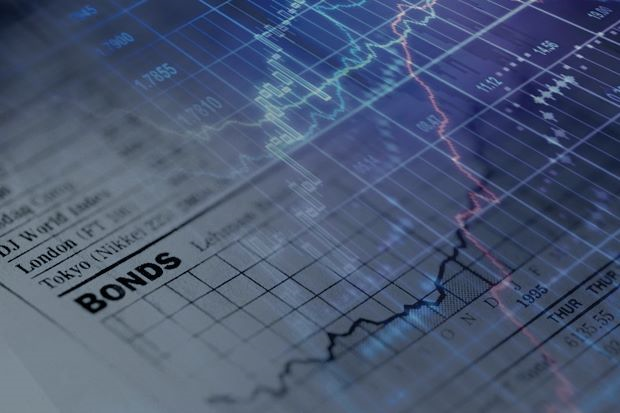
BIX ARTICLE
Bond market dominates a world of looser lending
Dec 20, 2023
|
8 min read
Featured Posts
Social Bonds Illustrative Use-Of-Proceeds Case Studies Coronavirus
Jul 06, 2020
|
2 min read
Sustainable Banking Network (SBN) Creating Green Bond Markets
Jul 06, 2020
|
2 min read
Why is Inflation Making a Big Comeback After Being Absent for Decades in the U.S.?
Mar 24, 2022
|
7 min read
SC issues Corporate Governance Strategic Priorities 2021-2023
Mar 29, 2022
|
3 min read
 |
That growth has often been too rapid, and flaws in credit markets sparked a global seizure in the 2008 financial crisis. And yet even that proved little more than a road bump in the rise of credit.
According to the International Monetary Fund, global public debt has tripled since the mid-1970s to reach 92% of the world’s combined gross domestic product or GDP (more than US$91 trillion) by the end of 2022.
Since 1960, private debt has tripled to 146% of GDP (or close to US$144 trillion). Over that time, the way that lending decisions are made has changed utterly.
Fifty years ago, banks and their loan officers still did most of the work. They’d use quantitative yardsticks, but the terms would come down to a banker’s discretion and a negotiation with the borrower. Now banks have largely been disintermediated in favour of credit markets. This shift should at least raise some concern.
Markets have clear advantages over banks. In the long run, the wisdom of crowds ensures they incorporate more points of view and arrive at a better price. Once a market is large and liquid, it should also be able to extend credit far more cheaply than a bank-lending department can.
And trading credit in securities markets avoids the inherent weakness of all fractional reserve banking: that a loss of confidence can render the institution insolvent.
In a market, if confidence is lost in a credit, then buyers have an opportunity to snap up bargains. The risk of a systemic crisis is much reduced. But ironically even strong believers in free markets are worried that the new system is distorting judgments and misdirecting credit.
Amar Bhide, an economist at Tufts University near Boston, argues that Friedrich Hayek, the great libertarian philosopher and founder of the Austrian school of economics, would oppose credit markets in their current form.
He further contends that Hayek might even argue that their judgments are no better than a central planner could achieve. Hayek wanted decisions to be decentralised and made by people as close to each situation as possible, Bhide said.
That led him to attack centralised communist economies. It might also lead Hayek to attack securitised credit markets, which agglomerate loans into packages that can be traded.
The problem is fundamental: To make a market sufficiently liquid, loans go through a process that diminishes the role of judgment.
Making something liquid enough to trade requires imposing “a certain collectivisation akin to central planning,” Bhide said.
Think only of the blind faith that investors showed before the global financial crisis by pouring money into any credit that had been labelled AAA by the rating companies. But there’s more to the growth in credit than the changing structures of markets.
Howard Marks, the legendary credit investor who co-founded Oaktree Capital Management, the credit hedge fund group, argues that even the 2008 crack-up pales in significance when compared with the fall in long-term yields that started in the early 1980s and has only recently come to an end.
He likes to ask people to nominate the single most important financial development of the past few decades. While popular candidates include the global financial crisis, the bursting of the tech bubble in 2000 or the desperate response to the Covid-19 pandemic in 2020, he said, “No one cites my candidate: the 2,000-basis-point decline in interest rates between 1980 and 2020.
“And yet that decline was probably responsible for the lion’s share of investment profits made over that period. How could it be overlooked?”
When rates are lower, repaying debt is easier, default is easier to avoid, and lenders have less need to worry about getting their money, while company managers escape tighter discipline from their creditors. It’s natural that there’s more debt.
But it’s also generated new and more speculative forms of lending, such as the bonds issued when companies are bought by private equity groups.
“I would venture that nearly 100% of capital for private equity investing has been put to work since interest rates began their downward move in 1980,” Marks said. “Should it come as a surprise that levered investing thrived in such salutary conditions?”
After the financial crisis, unnaturally low interest rates, which fell to zero in 2020 in response to the pandemic, exacerbated the problem. Industrialised credit markets have pumped out even more debt.
The questions now are whether there could be another crisis and whether credit investors have priced the risks well enough to be protected. On balance, a big rise in defaults appears overwhelmingly likely, albeit not one on the scale of the 2008 credit crisis.
Deutsche Bank AG’s Jim Reid, who’s been publishing a benchmark study of defaults for 25 years, predicts a peak rate of 9% for US high-yield bonds in the current cycle, up from 2.1% in 2022.
That would hurt, but it would be far below the rate during the financial crisis (15.6%), the tech bubble (12.2%) or the early 1990s (12.6%). Reid is predicting a return to “boom-bust” cycles rather than a crisis.
New York University professor Edward Altman, who’s famed in credit markets for the “Altman score” methodology for measuring how close companies have come to default, has a similar prediction. He warned earlier in 2023 that the “benign credit cycle” that had endured since 2010, with only a brief interruption for the pandemic in early 2020, was over, thanks largely to rising interest rates.
Using historical indicators compiled over the past 60 years, he said a “hard landing” recession could lead to corporate debt default rates of “perhaps 10% or more.” And yet riskier debt has actually rallied further during 2023.
Dimos Andronoudis, an economist at Fathom Consulting in London, uses Altman-score analysis to show that only 10% of US-listed companies are showing strong financial health. That’s the lowest on record.
Fewer companies appear in a good state, and more are close to bankruptcy, even than in 2007-2009, the years of the credit crisis. By the end of the last financial year, a record 36% of US companies were bankruptcy candidates.
Such numbers aren’t surprising after a sharp rise in interest rates. But markets aren’t reacting as might be expected. The spreads in yields compared with lower-risk Treasury bonds should rise to account for probable defaults.
By Reid’s calculations, current spreads across the high-yield bond market would adequately compensate for defaults on the scale that’s been seen in previous recessions – but not for the worst few years around the dot-com bubble.
The lowest-quality debt, though, would inflict losses on investors if defaults were merely to mirror less serious cycles, such as the early 1990s.
Meanwhile, the risk of approaching defaults should prompt banks to raise their lending standards, making it harder to borrow at any given interest rate.
And indeed, over time, tighter standards as measured by the Federal Reserve’s quarterly survey of senior lending officers have strongly correlated with rising credit spreads. That hasn’t happened in 2023.
Lending officers in the past year have turned the screw to an extent that historically has always led to a recession, even as market spreads imply something less virulent. In other words, bankers are more worried than the markets. Somebody’s wrong.
Junk-bond traders demand moderate premiums, while loan officers get stingier. It’s best to brace for rising defaults. That implies pain and losses in the short term and a new range of opportunities in the longer term.
As Marks puts it, investors have for a decade been desperate to escape the negligible yields on Treasury bonds and high-grade corporate debt, prompting many of them “to accept lower returns and reduced lender protections.”
Bondholders face a tough task to retrieve what they can. But fortunes could improve for credit investors like Marks for whom the last 13 years have been “a difficult, dreary, low-return period.”
Higher rates should reveal where capital has been wasted and restore the opportunity for credit investors who do their due diligence. It might even mean that something like true market discipline comes to the debt markets.
In the best outcome, lenders would pause to sort out the markets’ structural problems and adapt to higher interest rates before the world’s pile of debt grows any larger. It’s something to hope for. But don’t rely on it. — Bloomberg
Disclaimer
The information provided in this report is of a general nature and has been prepared for information purposes only. It is not intended to constitute research or as advice for any investor. The information in this report is not and should not be construed or considered as an offer, recommendation or solicitation for investments. Investors are advised to make their own independent evaluation of the information contained in this report, consider their own individual investment objectives, financial situation and particular needs and should seek appropriate personalised financial advice from a qualified professional to suit individual circumstances and risk profile.
The information contained in this report is prepared from data believed to be correct and reliable at the time of issuance of this report. While every effort is made to ensure the information is up-to-date and correct, Bond and Sukuk Information Platform Sdn Bhd (“the Company”) does not make any guarantee, representation or warranty, express or implied, as to the adequacy, accuracy, completeness, reliability or fairness of any such information contained in this report and accordingly, neither the Company nor any of its affiliates nor its related persons shall not be liable in any manner whatsoever for any consequences (including but not limited to any direct, indirect or consequential losses, loss of profits and damages) of any reliance thereon or usage thereof.
YOU MAY ALSO LIKE
ARTICLE
Jan 09, 2026
|
4 min read
ARTICLE
Jan 08, 2026
|
5 min read
ARTICLE
Jan 05, 2026
|
7 min read
ARTICLE
Dec 23, 2025
|
5 min read


